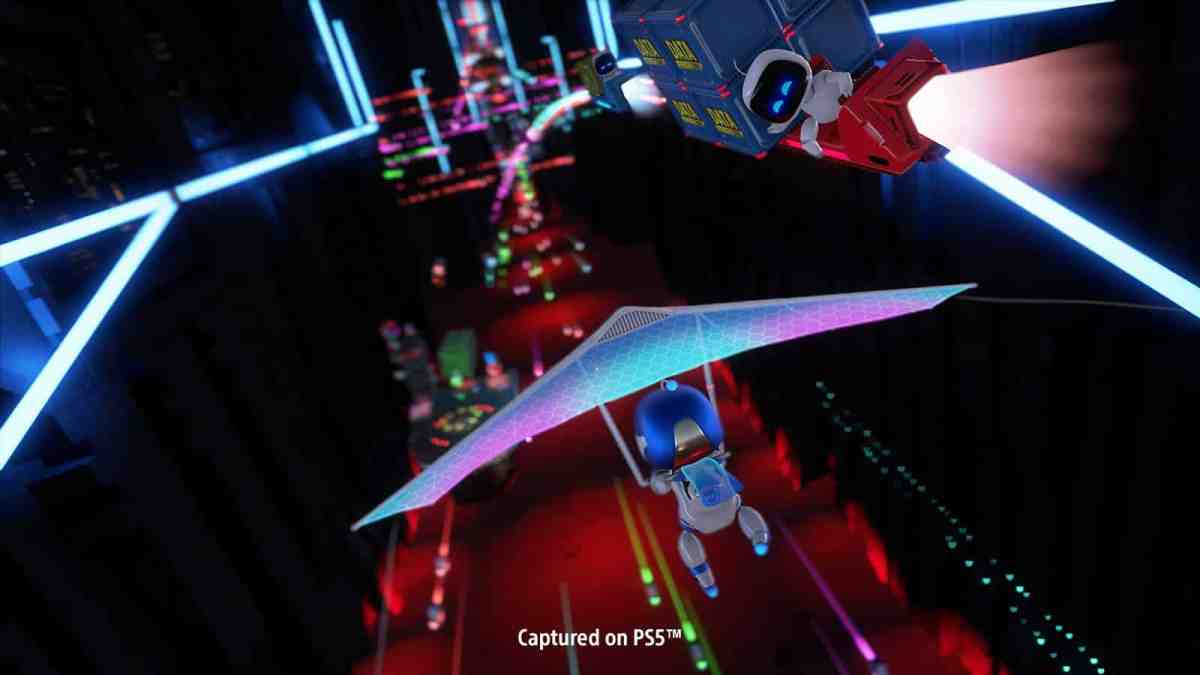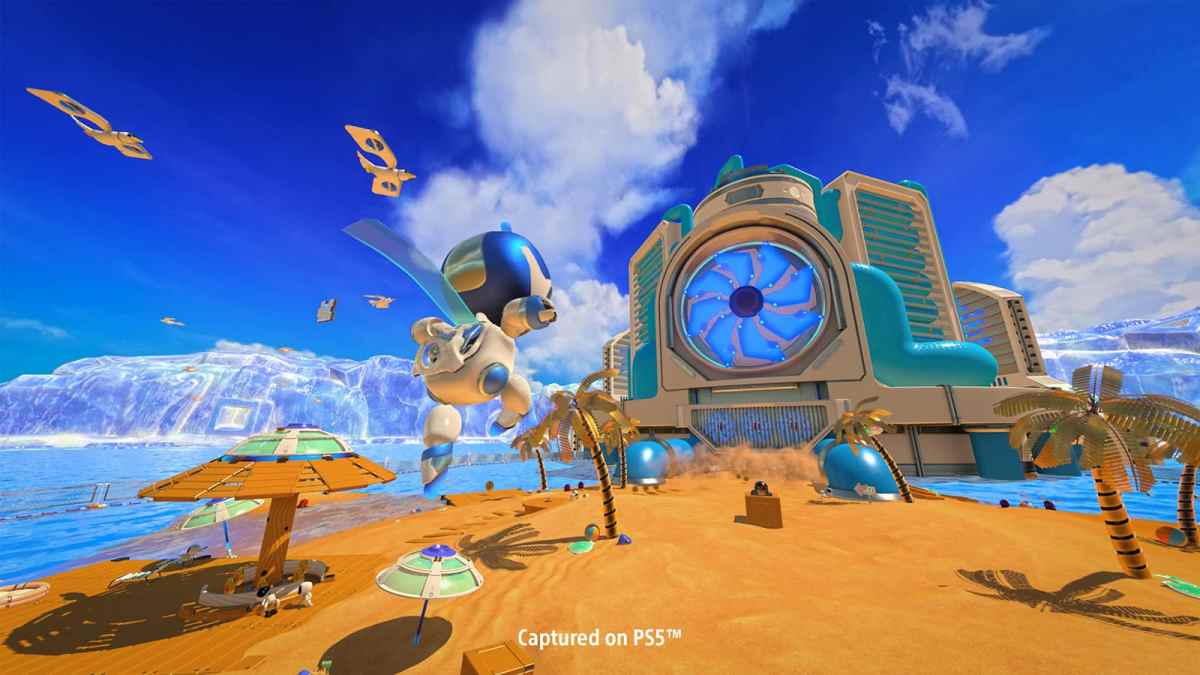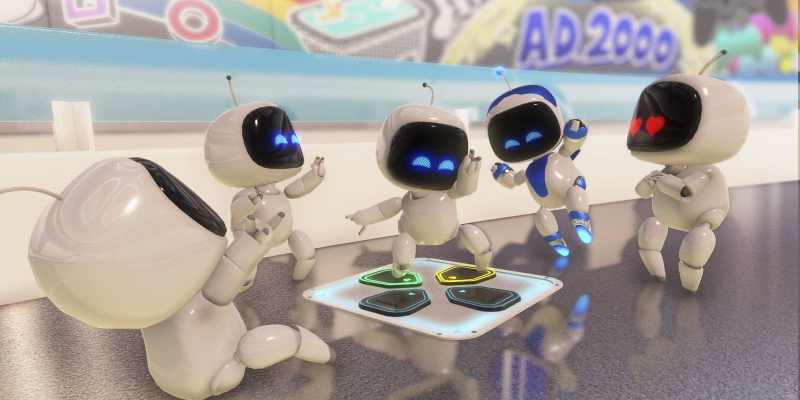Astro’s Playroom is the kind of game that we don’t see very often anymore. I’m not talking about its basic genre of a colorful 3D platformer, which is actually seeing a wonderful resurgence in Crash Bandicoot 4: It’s About Time, Sackboy: A Big Adventure, and Nintendo’s revival of classic Mario games. No, Astro’s Playroom is a game that comes packed in and pre-installed on PlayStation 5, makes complete and wonderful use of the remarkable DualSense controller, and is one of the most wonderful interactive celebrations of video game history I’ve ever played. In short, I think it’s the PS5’s low-key killer app — and the best pack-in game since Super Mario World on the SNES back in 1991.
It’s perfectly understandable that a lot of folks might’ve breezed right past Astro’s Playroom. After unwrapping their shiny new PlayStation 5, it makes sense to want to immediately jump into Manhattan as Miles Morales, the Nexus in Demon’s Souls, or the Viking life in Assassin’s Creed Valhalla. But Astro’s Playroom feels like a tutorial for the very console itself, and it is almost designed to be our introduction to the new hardware. It’s a game that everyone should experience in order to understand the new and unique traits that Sony’s brought to us this generation, and that starts with the DualSense.
Booting up Astro’s Playroom and going through the controller demo is the most next-gen-feeling thing I’ve experienced with either one of the new consoles. I’d read a ton of impressions and watched countless videos of people singing the praises of Sony’s new haptic feedback technology, but it’s truly one of those things that needs to be experienced first-hand in order to understand. Feeling the tension on the triggers adapt to the situation, the precise sound and rumble as the tiny Astrobots were rolling around inside the controller itself, and the tactile subtlety of “zipping” up using the front touchscreen all brought to mind a similar feeling of magic and wonder from when I first used the Nintendo 64 Rumble Pak with Star Fox 64 in 1997.

In fact, I’d go so far as to say that experiencing the DualSense’s capabilities in Astro’s Playroom felt like a technological advancement on par with when I first used the analogue stick to control Mario in front of Peach’s Castle in Super Mario 64 or took my first swing of a tennis racket in Wii Sports. For the first time in a long time, it felt like the physical relationship with how my hands spoke with a video game world had evolved.
The feeling of complete and utter wonderment only grew as I played through Astro’s Playroom’s four infectiously charming worlds. Feeling the haptic feedback evolve as the weather went from rain to hail, experiencing the resistance as I trudged through a sandy beach in the face of massive gusts of wind, and playing around on a slippery mud hill made my mind race with possibilities of how developers from across the world might implement this technology in new and remarkable ways over the course of this new generation.
But while it would’ve been enough for SIE Japan Studio’s ASOBI Team to just deliver a tech demo that showed off the DualSense, the game is so much more than that. Astro’s Playroom is also an entertaining platformer that doubles as a fantastic tribute to PlayStation history. Exploring every nook and cranny of the colorful worlds led to countless moments of excitement as I would stumble across a crew of Astrobots recreating a scene from a classic, or sometimes obscure, piece of Sony’s history. Every generation sees an equal share of love, from Cloud Strife’s Buster Sword, to the trio of emotional games from Fumito Ueda and Team Ico, to modern classics like Bloodborne and God of War, to games I’d completely forgotten about like Pain on PlayStation 3. This game is the epitome of Rick Dalton excitedly pointing at his television in Once Upon a Time in Hollywood.

Furthermore, I loved expanding the Labo hub room, including the massive PlayStation mural that slowly filled out with each puzzle piece I discovered, and the dozens of pieces of Sony technology that adorned the floor. Realizing that I could hop on the large eject button of the original PlayStation and send the pair of bots on top of it flying off is a perfect example of the love and care that the team put into this interactive museum. And I won’t spoil it, but the way the last stage incorporates the very origins of the PlayStation itself made for one of the most satisfying final bosses in recent memory. It’s funny that in the year of Super Mario’s 35th anniversary, Sony managed to deliver a much more loving tribute to its legacy than Nintendo did.
Though it’s certainly not the longest or deepest launch game on PlayStation 5, I genuinely think it’s the most important. It’s the most impactful pack-in game since Super Mario World, surpassing even Wii Sports by delivering more than just a promise of the future. While I played the hell out of the Wii’s trio of pack-in activities when I first got my console at the end of 2006, it felt mostly like a proof of concept that was sort of left by the wayside by the end of the generation.
But Astro’s Playroom goes above and beyond that by showing off what PlayStation 5 is capable of, while also delivering a great platformer and an interactive trip down memory lane. It simultaneously reminded me of the countless incredible journeys I’ve had with PlayStation over the past 25 years, while also giving me a glimpse at the future that Sony has in store for all of us.
